1. Kumari M, Lu RM, Li MC, Huang JL, Hsu FF, Ko SH, et al. A critical overview of current progress for COVID-19: development of vaccines, antiviral drugs, and therapeutic antibodies. J Biomed Sci. 2022; 29(1):68. PMID:
36096815.
2. Khandia R, Singhal S, Alqahtani T, Kamal MA, El-Shall NA, Nainu F, et al. Emergence of SARS-CoV-2 omicron (B.1.1.529) variant, salient features, high global health concerns and strategies to counter it amid ongoing COVID-19 pandemic. Environ Res. 2022; 209:112816. PMID:
35093310.
3. Levin MJ, Ustianowski A, De Wit S, Launay O, Avila M, Templeton A, et al. Intramuscular AZD7442 (tixagevimab-cilgavimab) for prevention of COVID-19. N Engl J Med. 2022; 386(23):2188–2200. PMID:
35443106.
5. Gupta A, Gonzalez-Rojas Y, Juarez E, Crespo Casal M, Moya J, Falci DR, et al. Early treatment for COVID-19 with SARS-CoV-2 neutralizing antibody sotrovimab. N Engl J Med. 2021; 385(21):1941–1950. PMID:
34706189.
7. Fred Hutchinson Cancer Center. Pharmacokinetics of sotrovimab as pre-exposure prophylaxis for COVID-19 in hematopoietic stem cell transplant recipients, COVIDMAB study. Updated 2023. Accessed March 1, 2023.
https://clinicaltrials.gov/ct2/show/NCT05135650
.
8. Totschnig D, Augustin M, Niculescu I, Laferl H, Jansen-Skoupy S, Lehmann C, et al. SARS-CoV-2 pre-exposure prophylaxis with sotrovimab and tixagevimab/cilgavimab in immunocompromised patients-a single-center experience. Viruses. 2022; 14(10):2278. PMID:
36298832.
9. Corey L, Beyrer C, Cohen MS, Michael NL, Bedford T, Rolland M. SARS-CoV-2 variants in patients with immunosuppression. N Engl J Med. 2021; 385(6):562–566. PMID:
34347959.
10. Jo Y, Shrestha S, Radnaabaatar M, Park H, Jung J. Optimal social distancing policy for COVID-19 control in Korea: a model-based analysis. J Korean Med Sci. 2022; 37(23):e189. PMID:
35698839.
18. Sassi F. Calculating QALYs, comparing QALY and DALY calculations. Health Policy Plan. 2006; 21(5):402–408. PMID:
16877455.
19. Pereira MR, Mohan S, Cohen DJ, Husain SA, Dube GK, Ratner LE, et al. COVID-19 in solid organ transplant recipients: Initial report from the US epicenter. Am J Transplant. 2020; 20(7):1800–1808. PMID:
32330343.
21. Pifarré I Arolas H, Acosta E, López-Casasnovas G, Lo A, Nicodemo C, Riffe T, et al. Author correction: years of life lost to COVID-19 in 81 countries. Sci Rep. 2021; 11(1):8543. PMID:
33854139.
22. Parra PN, Atanasov V, Whittle J, Meurer J, Luo QE, Zhang R, et al. The effect of the COVID-19 pandemic on the elderly: population fatality rates, COVID mortality percentage, and life expectancy loss. Elder Law J. 2022; 30:33–80. PMID:
35936928.
23. Andrasfay T, Goldman N. Reductions in 2020 US life expectancy due to COVID-19 and the disproportionate impact on the Black and Latino populations. Proc Natl Acad Sci U S A. 2021; 118(5):e2014746118. PMID:
33446511.
24. Lauring AS, Tenforde MW, Chappell JD, Gaglani M, Ginde AA, McNeal T, et al. Clinical severity of, and effectiveness of mRNA vaccines against, COVID-19 from omicron, delta, and alpha SARS-CoV-2 variants in the United States: prospective observational study. BMJ. 2022; 376:e069761. PMID:
35264324.
25. Kim YE, Jo MW, Park H, Oh IH, Yoon SJ, Pyo J, et al. Updating disability weights for measurement of healthy life expectancy and disability-adjusted life year in Korea. J Korean Med Sci. 2020; 35(27):e219. PMID:
32657086.
27. Lee LY, Cazier JB, Angelis V, Arnold R, Bisht V, Campton NA, et al. COVID-19 mortality in patients with cancer on chemotherapy or other anticancer treatments: a prospective cohort study. Lancet. 2020; 395(10241):1919–1926. PMID:
32473682.
28. Martín-Moro F, Marquet J, Piris M, Michael BM, Sáez AJ, Corona M, et al. Survival study of hospitalised patients with concurrent COVID-19 and haematological malignancies. Br J Haematol. 2020; 190(1):e16–e20. PMID:
32379921.
29. Chanda D, Minchella PA, Kampamba D, Itoh M, Hines JZ, Fwoloshi S, et al. COVID-19 severity and COVID-19-associated deaths among hospitalized patients with HIV infection - Zambia, March-December 2020. MMWR Morb Mortal Wkly Rep. 2021; 70(22):807–810. PMID:
34081684.
31. Mahase E. COVID-19: UK will not buy Evusheld owing to “insufficient data” on protection, government says. BMJ. 2022; 378:o2021. PMID:
35970520.
33. VanBlargan LA, Errico JM, Halfmann PJ, Zost SJ, Crowe JE Jr, Purcell LA, et al. An infectious SARS-CoV-2 B.1.1.529 omicron virus escapes neutralization by therapeutic monoclonal antibodies. Nat Med. 2022; 28(3):490–495. PMID:
35046573.
34. Park YJ, De Marco A, Starr TN, Liu Z, Pinto D, Walls AC, et al. Antibody-mediated broad sarbecovirus neutralization through ACE2 molecular mimicry. Science. 2022; 375(6579):449–454. PMID:
34990214.
36. Dijk SW, Krijkamp EM, Kunst N, Gross CP, Wong JB, Hunink MG. Emerging therapies for COVID-19: the value of information from more clinical trials. Value Health. 2022; 25(8):1268–1280. PMID:
35490085.
37. Jovanoski N, Kuznik A, Becker U, Hussein M, Briggs A. Cost-effectiveness of casirivimab/imdevimab in patients with COVID-19 in the ambulatory setting. J Manag Care Spec Pharm. 2022; 28(5):555–565. PMID:
35238626.
38. Flaxman AD, Issema R, Barnabas RV, Ross JM. Estimated health outcomes and costs of COVID-19 prophylaxis with monoclonal antibodies among unvaccinated household contacts in the US. JAMA Netw Open. 2022; 5(4):e228632. PMID:
35452104.
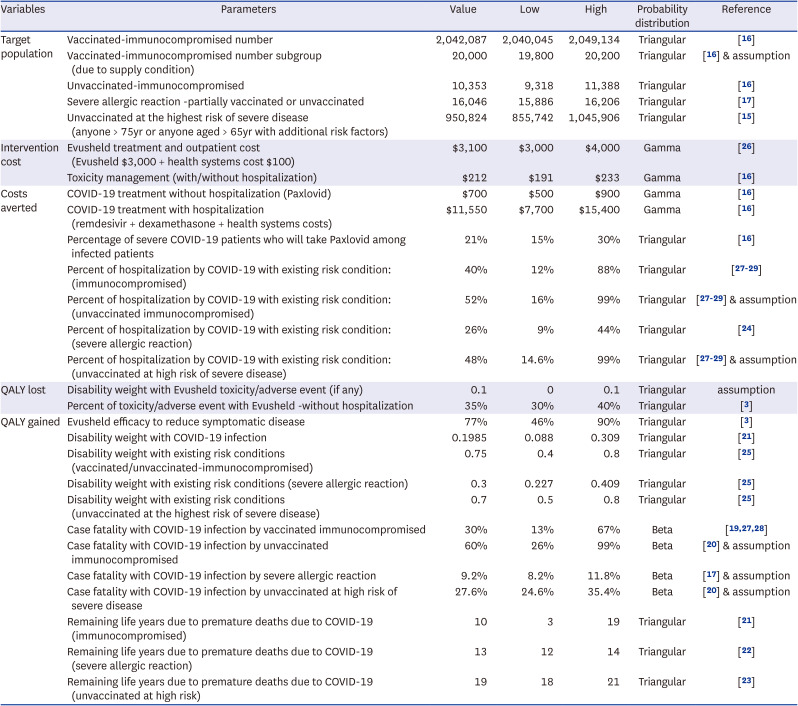





 PDF
PDF Citation
Citation Print
Print



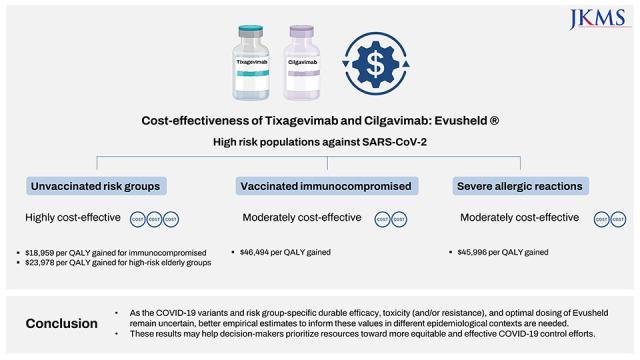
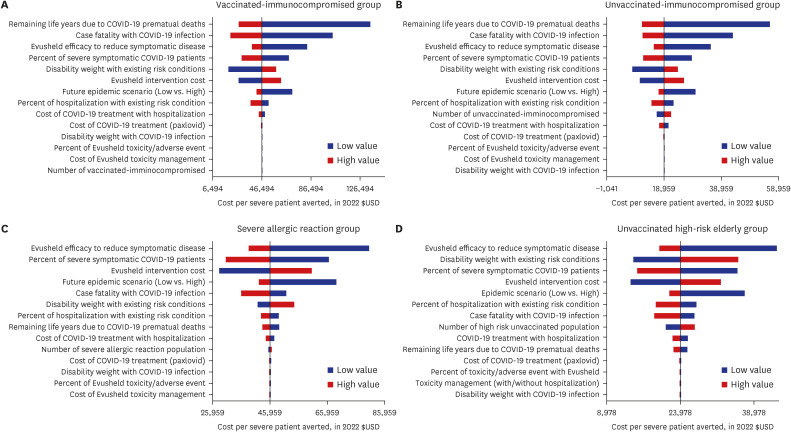
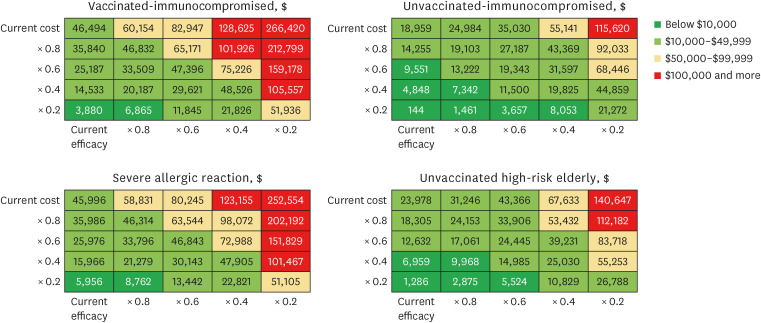
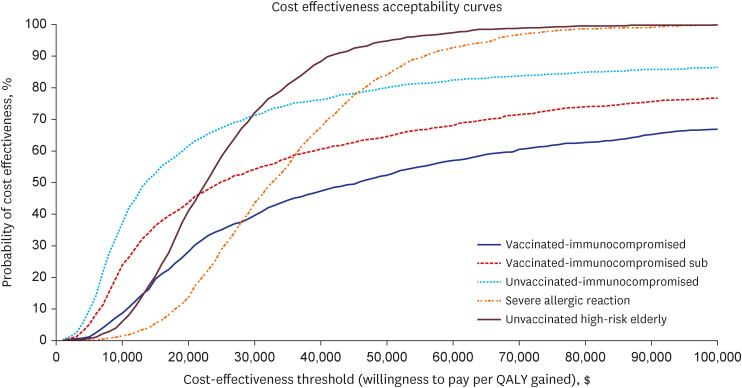
 XML Download
XML Download